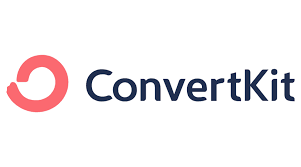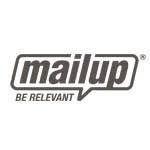Welcome to the ultimate guide where we pit two email marketing giants, ConvertKit and MailUp, against each other. In this age where email marketing continues to reign supreme in the digital marketing world, choosing the right tool is more crucial than ever. This comprehensive article aims to dissect, analyze, and compare these two platforms, helping you make an informed decision for your 2024 marketing strategy. Let’s dive into our first area of comparison, without any fluff or jargon, just straight facts.
| ConvertKit | MailUp |
|---|---|
 |  |
| G2 Score – 4.4 out of 5 stars | G2 Score – 3.7 out of 5 stars |
| TrustRadius Score – 8.8 out of 10 | TrustRadius Score – 6.0 out of 10 |
User Experience and Interface: The Battle of Ease vs. Features
In the digital marketing tool arena, the user experience (UX) and interface (UI) can make or break your workflow. It’s not just about the aesthetics; it’s about how intuitively you can navigate and use the features. Let’s see how ConvertKit and MailUp stack up in this regard.
ConvertKit: Streamlined Simplicity
ConvertKit has always been lauded for its clean, minimalistic interface that’s a hit with creators, bloggers, and small business owners. It’s designed for those who want to get their email marketing up and running without wading through a complex setup process.
From the moment you log in, ConvertKit feels welcoming. The dashboard is uncluttered, with a focus on the most essential features. Setting up an email campaign is straightforward, with intuitive steps guiding you through the process. Whether it’s creating a new subscriber form, setting up an email sequence, or analyzing campaign performance, everything is just a few clicks away.
The platform’s ease of use doesn’t come at the expense of power, though. ConvertKit offers robust automation, segmentation, and personalization features, but they are presented in a way that’s accessible even to email marketing novices. This balance of simplicity and functionality is what makes ConvertKit a favorite among its users.
MailUp: Feature-Rich and Flexible
MailUp, in contrast, takes a more feature-heavy approach. It caters to medium and large businesses that require a more comprehensive set of tools for their complex email marketing strategies. The platform offers a wide range of features, including advanced segmentation, detailed analytics, and multi-channel marketing capabilities.
While MailUp’s interface is not overly complicated, it packs in more options and settings compared to ConvertKit. This can be a bit daunting for first-time users or small business owners who don’t require such extensive functionalities. However, for marketing teams that need these advanced features, the learning curve is a worthwhile investment.
MailUp’s strength lies in its ability to provide detailed control over every aspect of your email campaigns. You can dive deep into customization, automate across various channels, and track comprehensive analytics, making it a powerful tool for data-driven marketing strategies.
Verdict
In the realm of UX and UI, ConvertKit and MailUp serve different user bases. ConvertKit’s streamlined and intuitive interface makes it an excellent choice for individuals and small businesses who value simplicity and ease of use. MailUp, with its comprehensive and feature-rich interface, is more suited for larger businesses or users who need a more detailed and flexible email marketing platform.
Deliverability: Ensuring Your Emails Hit the Mark
In the world of email marketing, deliverability is a key player. It’s not just about sending emails; it’s about ensuring they reach the inbox and not get lost in the spam folder. Let’s see how ConvertKit and MailUp perform in this crucial area.
ConvertKit: Focused on Reliable Inbox Placement
ConvertKit has garnered a reputation for its strong deliverability rates. This is a vital aspect for its core audience, which includes bloggers, creators, and small businesses. The platform achieves this through a combination of good infrastructure and best practices.
One of the key strengths of ConvertKit in deliverability is its focus on maintaining a healthy sender reputation. The platform offers extensive guidelines on best email practices to ensure that your emails are compliant and less likely to be marked as spam.
Moreover, ConvertKit’s emphasis on creating personalized and engaging content also plays a significant role in its high deliverability rates. Emails that resonate with the audience and encourage interaction are less likely to be flagged by email providers, ensuring better inbox placement.
MailUp: Advanced Tools for Deliverability
MailUp takes a more technical approach to deliverability, suitable for medium to large businesses with more complex email marketing needs. The platform offers a range of advanced tools to manage and optimize deliverability.
Features like advanced segmentation, automated A/B testing, and detailed analytics in MailUp help businesses fine-tune their email strategies for optimal deliverability. The platform also provides dedicated IP options and SPF/DKIM authentication, which are crucial for businesses sending out high volumes of emails.
MailUp’s approach to deliverability is comprehensive, providing users with the tools and insights necessary to understand and improve how their emails perform in terms of reaching their audience’s inbox.
Verdict
In the area of deliverability, both ConvertKit and MailUp offer robust capabilities but cater to different needs. ConvertKit excels with its high deliverability rates, focusing on user education and content engagement, making it ideal for smaller scale senders. MailUp, with its array of technical tools and customizable options, is better suited for larger businesses or those with more complex email marketing strategies that require a detailed approach to deliverability.
Analytics and Reporting: Decoding the Data
Analytics and reporting capabilities are the backbone of effective email marketing, providing insights into campaign performance and audience behavior. Let’s delve into how ConvertKit and MailUp stack up in this crucial area.
ConvertKit: Simplified Analytics for Actionable Insights
ConvertKit’s approach to analytics is centered on simplicity and clarity, catering to its primary audience of creators, bloggers, and small businesses. The platform provides essential metrics in an easily digestible format, allowing users to quickly gauge the effectiveness of their campaigns.
With ConvertKit, you can access key performance indicators such as open rates, click-through rates, and subscriber growth without getting lost in complex data. This streamlined approach is ideal for users who need quick insights to make informed decisions about their email strategies.
Additionally, ConvertKit offers insights on audience engagement and content performance. These metrics are invaluable for creators who need to understand what resonates with their audience, helping them to create more targeted and effective content.
MailUp: Comprehensive Reporting for Data-Driven Strategies
MailUp, designed for medium to large businesses, offers a more comprehensive suite of analytics and reporting tools. The platform caters to users who require in-depth analysis of their email marketing campaigns.
MailUp’s analytics go beyond basic metrics, providing detailed reports on various aspects of campaign performance, including advanced segmentation analysis, conversion tracking, and behavior-based insights. This level of detail is crucial for businesses looking to deeply understand the impact and ROI of their email marketing efforts.
Moreover, MailUp offers customizable reporting features, allowing businesses to tailor their analytics to specific needs and goals. This flexibility is key for larger organizations or those with specific reporting requirements, enabling them to extract and analyze the exact data they need.
Verdict
When it comes to analytics and reporting, ConvertKit and MailUp serve different market segments. ConvertKit offers straightforward and easy-to-understand analytics, making it an excellent choice for individual creators and small businesses that need quick and actionable insights. On the other hand, MailUp provides comprehensive and detailed analytics, suited for businesses that require extensive data analysis to inform their complex marketing strategies.

Related: Check out our free SEO suite

Integration Capabilities: Expanding the Reach
In today’s interconnected digital marketing landscape, the ability of an email marketing tool to integrate with other platforms and services is crucial. Let’s compare the integration capabilities of ConvertKit and MailUp.
ConvertKit: Streamlined Integrations for Efficiency
ConvertKit offers a range of integrations that are particularly beneficial for its target audience of bloggers, creators, and small businesses. The platform focuses on providing seamless integrations with the most popular tools used by its user base, including e-commerce platforms, CRM systems, and social media tools.
These integrations are designed to be straightforward and user-friendly, allowing creators to connect their email marketing campaigns with other aspects of their digital presence effortlessly. For example, integrating with a blogging platform or an e-commerce site can help automate subscriber list updates and segment audiences based on user behavior.
MailUp: Extensive and Versatile Integrations
MailUp takes a more expansive approach to integrations, catering to the diverse and complex needs of medium to large businesses. The platform supports a wide array of integrations, including advanced CRM systems, e-commerce platforms, and various third-party apps and services.
With MailUp, businesses can synchronize their email marketing efforts with multiple other channels and tools, allowing for a more cohesive and integrated marketing strategy. These integrations provide the flexibility and scalability that larger businesses require, enabling them to create a highly customized marketing ecosystem.
Verdict
In terms of integration capabilities, ConvertKit and MailUp again cater to different needs. ConvertKit’s integrations are streamlined and straightforward, perfect for creators and small businesses looking to enhance their email marketing without the need for complex technical setups. MailUp offers a broader range of integrations with greater flexibility, making it a more suitable option for larger businesses with multifaceted marketing strategies that span across various platforms and tools.
Pricing Structure: Balancing Cost with Features
The pricing structure of an email marketing tool is a critical consideration, balancing the cost against the features and value offered. Let’s dive into how ConvertKit and MailUp approach their pricing strategies.
| ConvertKit | Free Plan: Offers basic features for up to 1,000 subscribers, including email broadcasts, landing pages, and forms. Creator Plan: Starting at $29/month for up to 1,000 subscribers, including automation and third-party integrations. The price increases with more subscribers. Creator Pro Plan: Starting at $59/month for up to 1,000 subscribers, adding advanced features like newsletter referral system, subscriber scoring, and advanced reporting. |
| MailUp | Pay Per Speed Plans: MailUp’s pricing is based on sending speed rather than the number of contacts. Starts at around $65/month for the slowest sending speed. Monthly Plans: Also offers traditional monthly plans based on the number of emails sent, with prices starting at around $85/month for up to 400,000 sends. Prepaid Credits: Alternatively, you can buy prepaid credits for sending emails without a monthly fee. All plans include features like email automation, transactional emails, and analytics. |
ConvertKit: Affordable and Transparent
ConvertKit’s pricing model is known for its transparency and simplicity, catering to bloggers, creators, and small businesses. The platform offers a tiered pricing structure based on the number of subscribers, making it easy for users to choose a plan that aligns with their audience size and needs.
One of the advantages of ConvertKit’s pricing is the clarity it offers. Users can easily understand what they’re paying for and can anticipate costs as their subscriber list grows. ConvertKit also offers a free plan with basic features, which is a great starting point for those just beginning their email marketing journey or operating with a limited budget.
As users’ needs expand, ConvertKit provides options to upgrade to more feature-rich plans, ensuring that businesses of all sizes can find a suitable package that matches their budget and marketing requirements.
MailUp: Customizable Pricing for Varied Needs
MailUp’s pricing structure is designed to cater to the more varied and complex requirements of medium to large businesses. The platform offers customized pricing based on the specific needs of the business, including factors like the volume of emails, the number of subscribers, and the range of features required.
This customizable approach is beneficial for businesses that require a comprehensive email marketing solution tailored to their particular needs. While this might result in a higher price point compared to ConvertKit, it reflects the advanced capabilities and scalability that MailUp provides.
MailUp’s pricing ensures that businesses are not paying for features they don’t need, making it a cost-effective solution for larger organizations or those with specific, extensive email marketing requirements.
Verdict
In terms of pricing, ConvertKit and MailUp cater to different market segments. ConvertKit offers an affordable and scalable solution, perfect for individual creators and small businesses looking for a straightforward and effective email marketing tool. MailUp, with its customizable pricing, is more suitable for larger businesses or those needing a comprehensive, feature-rich platform tailored to their specific marketing strategies.
Conclusion
As we conclude our comprehensive comparison of ConvertKit and MailUp, it’s evident that both platforms have their unique strengths, tailored to suit different types of users and needs in the email marketing realm.ConvertKit shines as a user-friendly, intuitive platform, perfect for creators, bloggers, and small businesses. Its strength lies in its simplicity, ease of use, and streamlined features that make email marketing accessible and effective. With its transparent pricing structure, ConvertKit is ideal for those starting out or operating on a smaller scale, providing them with the necessary tools to grow their audience without overwhelming them with complexities.
MailUp, on the other hand, emerges as a robust choice for medium to large businesses with more complex email marketing needs. It offers extensive features, advanced integrations, and customizable pricing, catering to businesses that require a comprehensive, multi-channel marketing approach. MailUp’s platform is well-suited for those who need a higher degree of control and customization in their campaigns, along with the capability to handle large volumes of emails. In essence, the choice between ConvertKit and MailUp should be guided by your specific email marketing requirements, the size and complexity of your campaigns, and the depth of features and integrations you need. ConvertKit is your go-to for straightforward, efficient email marketing, while MailUp is the tool for detailed, large-scale marketing strategies.
Read Next
- The Ethical Dimensions of Content Marketing: Navigating Gray Areas
- The Science Behind Shareable Content: What Triggers Virality?
- Long-Form vs. Short-Form Content: Which is Right for Your Brand?
- User Intent and Content Creation: Meeting Your Audience’s Needs
- The Synergy of Content Marketing and Social Media: A Winning Combo





















Comments are closed.